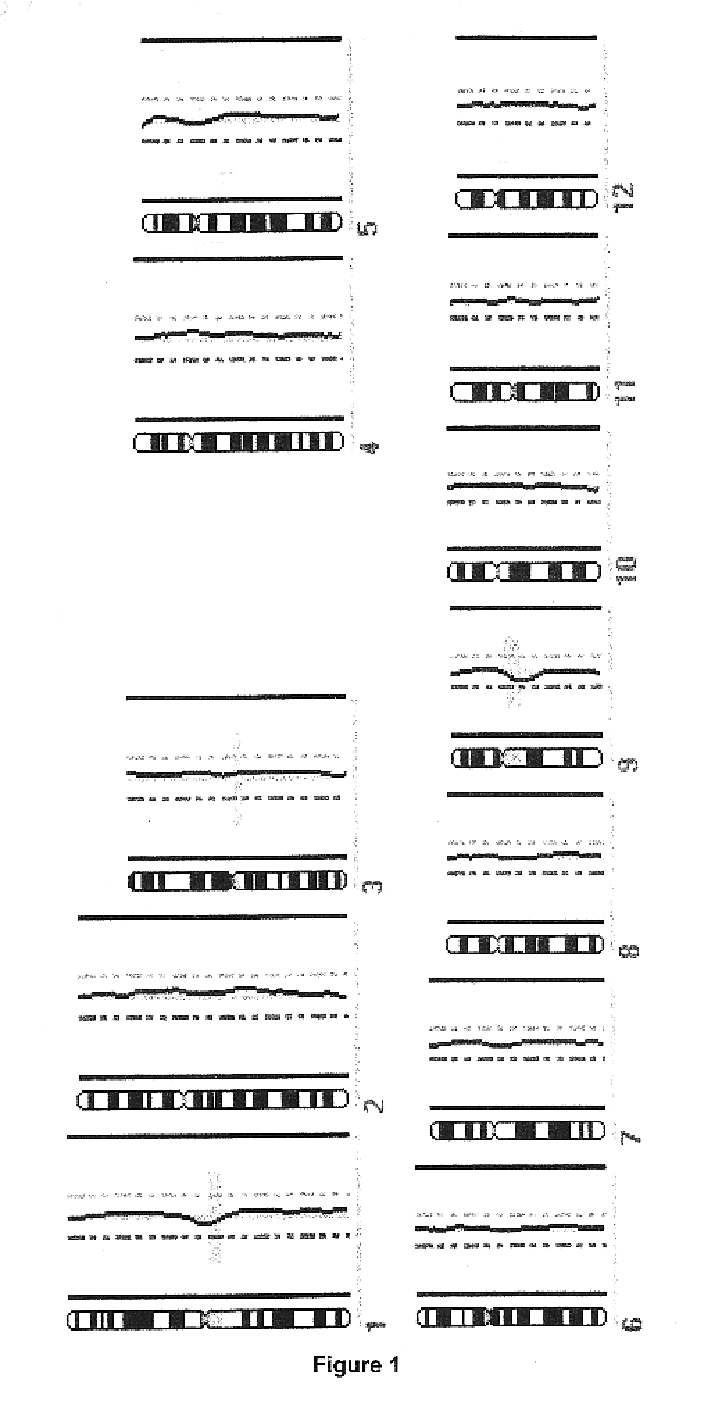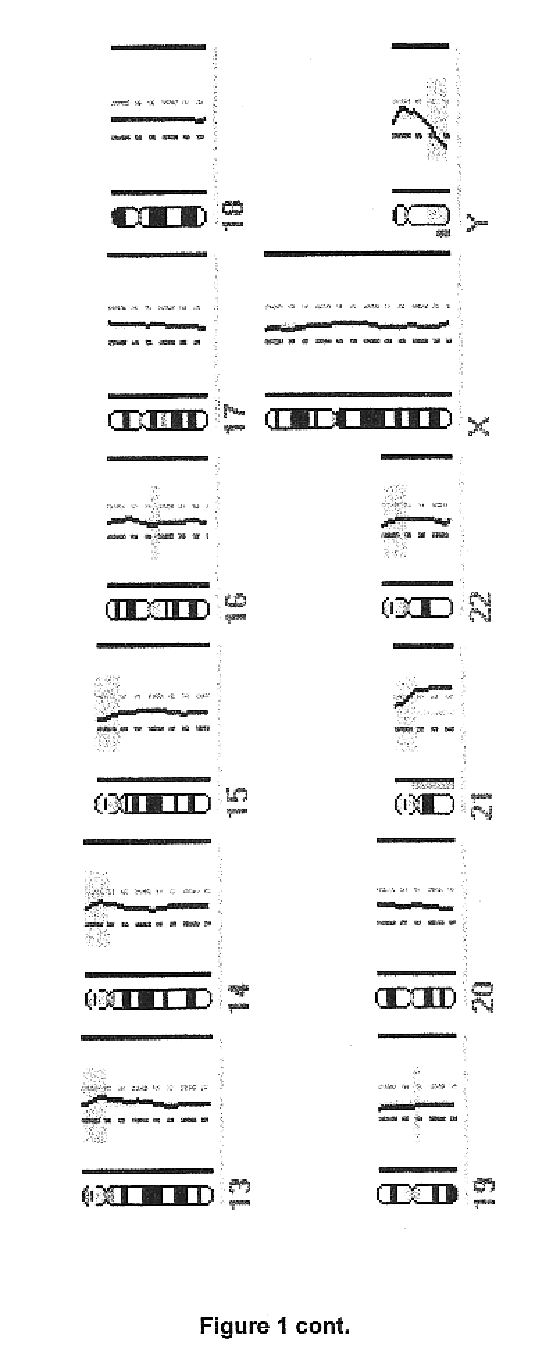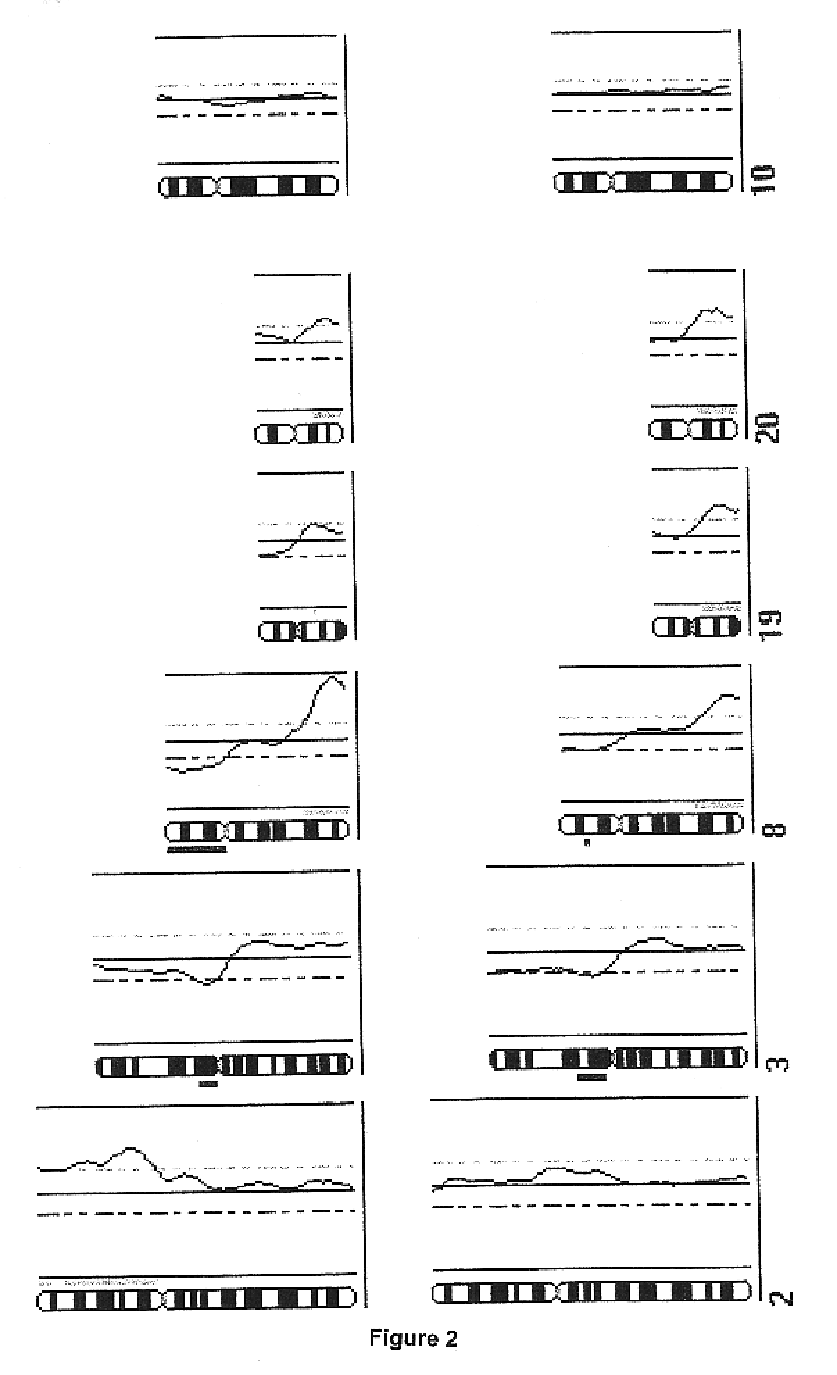DNA amplification of a single cell
a single cell, dna technology, applied in the field of dna amplification, to achieve the effect of improving accuracy and reliable amplification of dna
- Summary
- Abstract
- Description
- Claims
- Application Information
AI Technical Summary
Benefits of technology
Problems solved by technology
Method used
Image
Examples
example 2
Amplification of DNA of a Single Cell
In order to avoid template loss, all preparatory steps were performed in one tube. For DNA isolation, restriction enzyme digest, primer ligation and PCR-amplification all buffers and conditions were adjusted for optimal performance to guarantee highest reliability and reproducibility. Generally, high concentrations of proteinase K, Msel, T4 DNA ligase and Taq polymerase gave the best results.
A single cell (e.g. peripheral blood lymphocyte or bone marrow stoma cell) in 1 .mu.l pick buffer (50 mM Tris / HCl, pH 8.3, 75 mM KCl 3mM MgCl.sub.2, 137 mM NaCl) was added to 2 .mu.l Proteinase K digestion buffer (10 mM Tris-Acetate (pH 7.5), 10 mM Mg-Acetate, 50 mM K-Acetate (0.2 .mu.l of Pharmacia One-Phor-AII-Buffer-Plus), 0.67% TWEEN (Sigma), 0.67% Igepal (Sigma), 0.67 mg / ml Proteinase K) and incubated for 10h at 42.degree. C. in a PCR machine with heated lid. Proteinase K was inactivated at 80.degree. C. for 10 minutes. After inactivation of Proteinase K...
example 3
CGH With Amplified DNA From Peripheral Blood Lymphocytes
DNA isolated from a single unfixed and paraformaldehyde (PFA)-fixed peripheral blood lymphocyte was amplified as described in Example 2 and competitively hybridized with 1 .mu.g nick-translated, unamplified placenta DNA. Labeling was most efficient using ThermoSequenase in combination with a ratio of dTTP / bio-dUTP of 7 / 1. Reamplification was performed in 30 .mu.l using 0.5 .mu.l LigMse-21 primer (100 .mu.M), 1 .mu.l dNTP (dATP, dCTP, dGTP, 10 mM each, 8.6 mM dTTP) and 1.3 .mu.l biotin-16-dUTP (1 mM, Bboehringer Mannheim), 13 U ThermoSequenase (USB) in 1.times.ThermoSequenase buffer and 0.5 .mu.l of the primary PCR. In total 25 cycles were programmed with the temperatures set to 94.degree. C. (1 min.), 65.degree. C. (30 sec.), 72.degree. C. (2 min.) for 1 cycle; 94.degree. C. (40 sec.), 65.degree. C. (30 sec.), 72.degree. C. (1 min. 30 sec.) for 94.degree. C. (40 sec.), 65.degree. C. (30 sec.), 72.degree. C. (2 min.) for 9 cycle...
example 4
Detection of Chromosomal Changes in a Patient With Down's Syndrome
In order to determine whether known chromosomal changes could be detected by the single cell analysis, DNA of a single leukocyte from a blood sample of a patient with Down's syndrome and its DNA was isolated and amplified as described in Example 2. The CGH-profile showed a gain of chromosome 21 as single detectable abnormality (FIG. 1).
PUM
| Property | Measurement | Unit |
|---|---|---|
| temperature | aaaaa | aaaaa |
| temperature | aaaaa | aaaaa |
| pH | aaaaa | aaaaa |
Abstract
Description
Claims
Application Information
 Login to View More
Login to View More - R&D
- Intellectual Property
- Life Sciences
- Materials
- Tech Scout
- Unparalleled Data Quality
- Higher Quality Content
- 60% Fewer Hallucinations
Browse by: Latest US Patents, China's latest patents, Technical Efficacy Thesaurus, Application Domain, Technology Topic, Popular Technical Reports.
© 2025 PatSnap. All rights reserved.Legal|Privacy policy|Modern Slavery Act Transparency Statement|Sitemap|About US| Contact US: help@patsnap.com



